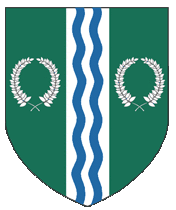 |
• Caligraphy Hornbook •
|
 |
Western calligraphy is the art of writing and penmanship as practiced in the Western world, especially using the Latin alphabet and those scripts that developed from it. The Latin alphabet is the most widely used alphabetic writing system and the main writing system found in the Western world throughout history. It was developed in the 7th century BC in Italy from earlier Phoenician, Greek, and Etruscan examples and has changed continually over the last 2500 years. The phonetic values of some letters changed, some letters were lost and gained, and several writing styles developed. Two, the minuscule and majuscule hands, were combined into one script with alternate forms for the lower and upper case letters.
While the story of writing is one of aesthetic development framed within the technical skills, transmission speed(s) and material limitations of a person, time and place, the practice of Calligraphy can be defined as "the art of giving form to signs in an expressive, harmonious and skillful manner."
In Calligraphy, a style of writing is described as a script, hand or alphabet. These scripts develop over time based upon the technology being employed and the practical consideration of what purpose they are being used for. The Latin alphabet began with roman square capitals (uppercase letters) and developed cursive styles (lowercase letters) to adapt the alphabet to writing with a pen or stylus.
This Hornbook will provide you with a basic introduction to the art of Calligraphy. This includes some information on how various scrips developed and evolved from earlier predecessors and some insight into why the change occurred, a description of the basic equipment needed to practice this art, an overview of calligraphic technique and a chart showing how to form the letters of the Gothic script.
|